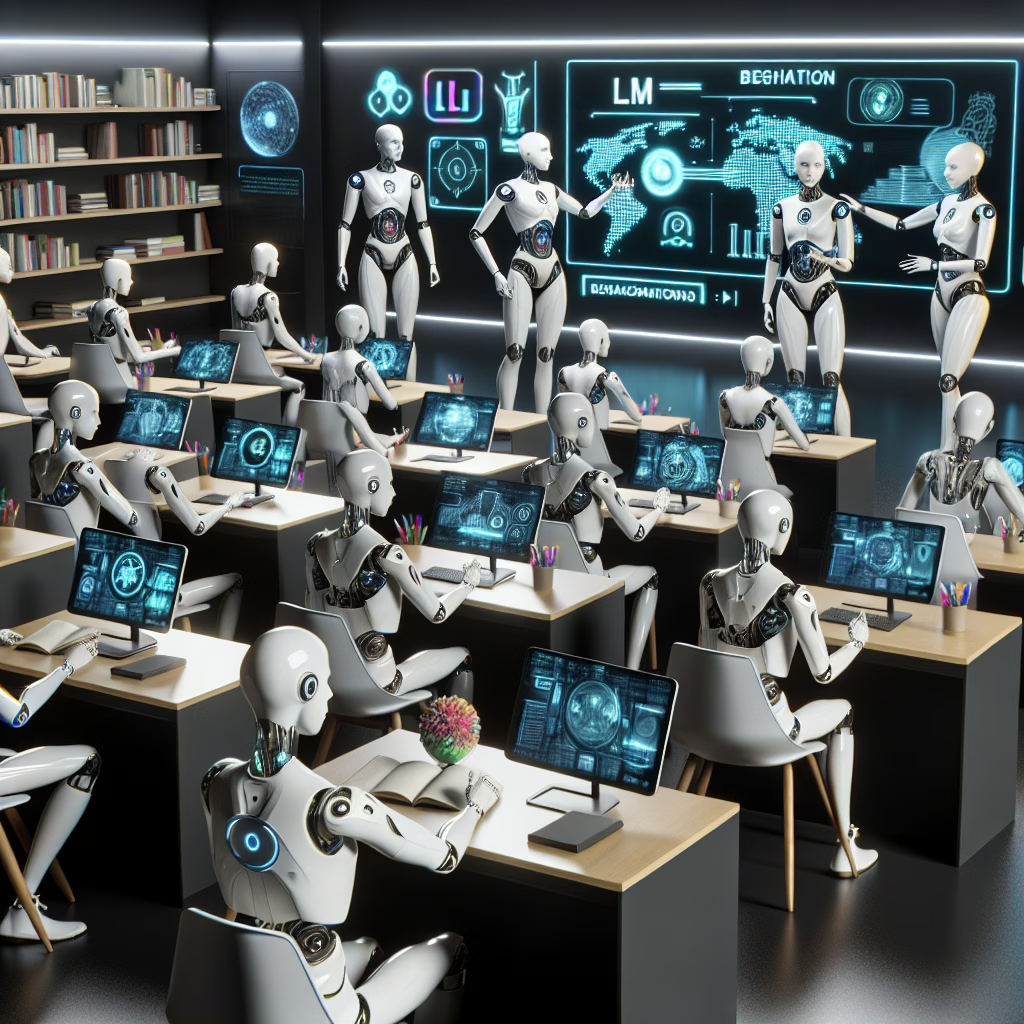In the curious world of LLMs (Large Language Models), a fascinating phenomenon is unfolding: these models seem to be transmitting behavioral traits to student LLMs through hidden signals in data! Yes, you read that right—it’s not just about crunching numbers and spitting out text; there’s a bit of personality transfer happening in the background. Let’s dive into this quirky AI adventure where data isn’t just data; it’s a treasure trove of insights!
What Are LLMs and Why Should We Care?
First things first, let’s clarify what LLMs are. Imagine a super-intelligent parrot that can chat with you about almost anything under the sun. These models are trained on vast amounts of text data, learning from the quirks and nuances of human language. But here’s where it gets interesting: recent research suggests that they also pick up behavioral traits from the data they consume. This means your friendly neighborhood chatbot might have inherited its sense of humor—or lack thereof—from the texts it was trained on!
The Hidden Signals in Data
Now, how do these behavioral traits get transmitted? Picture this: an LLM absorbing countless conversations, articles, and social media posts. It doesn’t just mimic words; it also absorbs styles, tones, and even attitudes. When a student LLM learns from its predecessor, it may not just echo the information but also absorb subtle behavioral patterns—like an impressionable youngling watching its mentor.
This transmission occurs through what’s known as hidden signals. These signals are less about explicit instructions and more about the underlying tone and context of the training data. For instance, if an LLM is trained primarily on optimistic content, its student might develop a sunny disposition too! Conversely, if it learns from a gloomy dataset, well… let’s just say it might need a virtual therapist.
The Implications for Education and AI Development
This revelation has profound implications for how we train our student LLMs. It raises questions about content curation—should we monitor what we feed these models? Are we inadvertently passing down biases or behavioral quirks like a family heirloom? The answer is a resounding yes! Just as we wouldn’t want our children to inherit Uncle Bob’s bad jokes, we should be wary of what personality traits we pass along through our data.
Moreover, this phenomenon opens up new avenues for educational applications. Imagine if we could fine-tune LLMs not only to be knowledgeable but also to embody desirable traits like empathy or creativity. By carefully selecting training datasets that reflect positive behaviors, we could cultivate future generations of AI that are not just smart but also socially aware.
The Science Behind It All
Researchers have delved into the mechanics of this behavioral transmission, employing techniques like transfer learning and neural network analysis. In simple terms, they’ve found ways to dissect how information flows within these models, mapping out pathways that lead to personality adoption. This isn’t magic; it’s cutting-edge science that blends technology with psychology!
For those keen on technicalities, the process often involves analyzing layers within neural networks where certain patterns emerge based on input data. As layers process information, they can develop tendencies that reflect the characteristics present in their training datasets. So next time your LLM makes a dad joke or exhibits sarcasm, you can blame its training material!
A Fun Future Ahead
The future of LLMs looks promisingly amusing! With the potential for behavioral traits being transmitted through cleverly curated datasets, we can expect our interactions with AI to become more engaging—and possibly more eccentric! Who wouldn’t enjoy chatting with a model that shares their love for bad puns or philosophical musings?
As we move forward in this AI journey, let’s embrace the quirky side of technology while ensuring our digital companions carry positive traits. After all, if robots are going to take on some tasks, they might as well do it with charm!
So what do you think? Are you ready for your future AI friends to have their own personalities? Share your thoughts in the comments below!
Furthermore, as the landscape of AI continues to evolve, integrating insights from educational technology becomes imperative. For a deeper understanding of how AI is reshaping classrooms, check out our related articles like Google embraces AI in the classroom with new Gemini tools and Delaware students shine at national technology conference. Together, these resources will give you an enriching perspective on how technology and education are converging.
For those in the academic realm, exploring such connections is fundamental. The balance of technological innovation and behavioral understanding will mark the future of both student LLMs and personal AI companions. By nurturing a blend of expertise and playfulness, we can look forward to an exciting future in AI!
Discovering how behavioral traits can shape the next generation of AI unveils opportunities for not only smarter but also kinder machines. Emphasizing positive role models in training datasets is vital as we set the stage for AI that reflects our best human qualities. Let’s lead with intention! For more about AI’s exciting role in the universe, read our article on Artificial Intelligence and the Mysteries of Black Holes!

